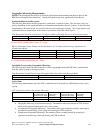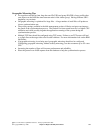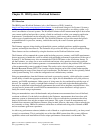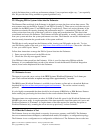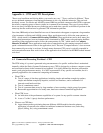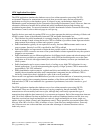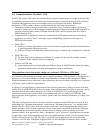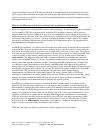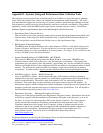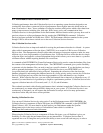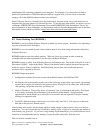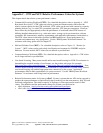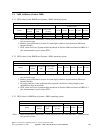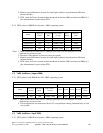
category that often fits into the CIW-like classification is overnight batch. Even though batch jobs often
process a great deal of database work, there are relatively few jobs which means there is little switching
of jobs from processor to processor. As a result, overnight batch data processing jobs sometimes act more
like compute-intensive jobs.
What are the differences in how these workloads react to hardware configurations?
When you upgrade your system, the effectiveness of the upgrade may be affected by the type of workload
you are running. CPW-like workloads tend to respond well to upgrades in memory and to processor
upgrades where the increase in MHz of the processor is accompanied by improvements in the processor
cache and memory subsystem. CIW-like workloads tend to respond more to pure MHz improvements and
to increasing the number of processors. You may experience both kinds of improvements. For example,
there may be a difference between the way the daytime OLTP application reacts to an upgrade and the
way the nighttime batch application reacts.
In a CPW-type workload, a lot of data is moved around and a wide variety of instructions are executed to
manage the data. Because the transactions tend to be fairly short and because tasks are often waiting for
new data to be brought from disk, processors are switched rapidly from task to task to task. This type of
workload runs most efficiently when large amounts of the data it must process are readily available. Thus,
it reacts favorably to large memory and large processor caches. We say that this type of workload is
cache-sensitive. The bigger and faster the cache is, the more efficiently the workload runs (Note that
cache is not an orderable feature. For iSeries, we attempt to balance processor upgrades with cache and
memory subsystem upgrades whenever possible.) Increasing the MHz of the processor also helps, but
you should not expect performance to scale directly with MHz unless other aspects of the system are
equally improved. An example of this scenario can be found in V4R1, when the Model 640 systems were
introduced as an upgrade path to Model 530 systems. The Model 640 systems actually had a lower MHz
than the Model 530s, yet because they had much more cache and a much stronger memory
implementation, they delivered a significantly higher CPW rating. Another aspect of CPW-type
workloads is a dependency on a strong memory I/O subsystem. iSeries systems have always had a strong
memory subsystem, but with the model 890, that subsystem was again significantly enhanced. Thus,
CPW-like workloads see an additional benefit when moving to these systems.
In a CIW-type workload, the situation is somewhat different. Compute intensive workloads tend to
processes less data with more instructions. As a consequence, the opportunity for both instruction and
data cache hits is much higher in this kind of workload. Furthermore, because the instruction path length
tends to be longer, it is likely that processors will switch from task to task much less often. Having some
cache is very important for these workloads, but having a big cache is not nearly as important as it is for
CPW-like workloads. For systems that are designed with enough cache and memory to accommodate
CPW-like work, there is usually more than enough to assist CIW-like work and so an increase in MHz
will tend to have a more dramatic effect on these workloads than it does on CPW-like work. CIW-like
workloads tend to be MHz-sensitive. Furthermore, since tasks stay resident on individual processors
longer, we tend to see better scaling on multiprocessor systems.
CPW and CIW ratings for iSeries systems can be found in Appendix D of this manual.
IBM i 6.1 Performance Capabilities Reference - January/April/October 2008
© Copyright IBM Corp. 2008 Appendix A - CPW and CIW Descriptions 339



